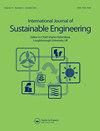美国大城市休斯顿公共交通车队更换为电动公交车的环境可持续性
IF 3.6
Q3 GREEN & SUSTAINABLE SCIENCE & TECHNOLOGY
International Journal of Sustainable Engineering
Pub Date : 2021-11-02
DOI:10.1080/19397038.2021.1972491
引用次数: 3
摘要
摘要在大休斯敦地区,移动源在NOx排放中所占比例最高,在VOC排放中所属比例第二。运营公共巴士的休斯顿地铁系统是休斯顿基础设施的关键要素,可以减少标准空气污染物(CAP)和温室气体(GHGs)的排放,从而改善地区空气质量。我们使用生命周期评估(LCA)和生命周期成本分析(LCCA)来评估电动公交车的环境可持续性,并将其与柴油公交车进行比较。LCA模拟表明,电动公交车的温室气体、挥发性有机物、氮氧化物和黑碳的生命周期排放量低于传统柴油和柴油混合动力公交车。这些较低的排放量主要归因于天然气目前占德克萨斯州发电燃料的50%左右。然而,PM10、PM2.5、SOx、N2O和一次有机碳等其他排放量更高,这将导致电动公交车的环境成本高于柴油公交车。环境成本分析估计,2040年电动公交车的年度成本节约将大大支持大休斯敦地区环境可持续性的长期目标。本文章由计算机程序翻译,如有差异,请以英文原文为准。
Environmental sustainability of public transportation fleet replacement with electric buses in Houston, a megacity in the USA
ABSTRACT In the Greater Houston Area, mobile sources contribute to the highest share of NOx emissions and the second-highest share of VOC emissions. The Houston METRO system that operates public buses is a key element of Houston’s infrastructures that could reduce the emissions of criteria air pollutants (CAPs) and greenhouse gases (GHGs), thus improving the regional air quality. We used life-cycle assessment (LCA) and life-cycle cost analysis (LCCA) to evaluate the environmental sustainability of electric buses and compared it to diesel buses. The LCA simulations demonstrate that life-cycle emissions of GHGs, VOCs, NOx, and black carbon associated with electric buses are lower than conventional diesel and diesel hybrid buses. These lower emissions are mainly attributed to the fact that natural gas currently makes up about 50% of the fuel used to generate electricity in Texas. However, other emissions such as PM10, PM2.5, SOx, N2O, and primary organic carbon are higher and would lead to the higher environmental cost of electric buses than diesel buses. The environmental cost analysis estimates that the annual cost savings of electric buses in 2040 would significantly support the long-term goal of environmental sustainability in the Greater Houston area.
求助全文
通过发布文献求助,成功后即可免费获取论文全文。
去求助
来源期刊

International Journal of Sustainable Engineering
GREEN & SUSTAINABLE SCIENCE & TECHNOLOGY-
CiteScore
7.70
自引率
0.00%
发文量
19
 求助内容:
求助内容: 应助结果提醒方式:
应助结果提醒方式:


